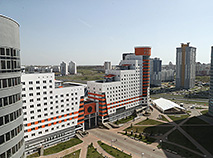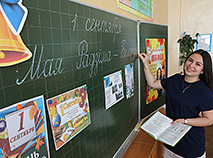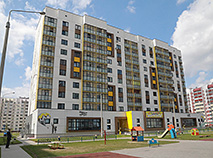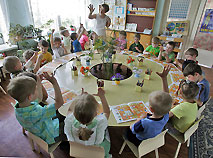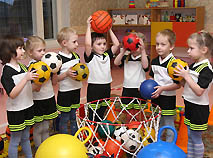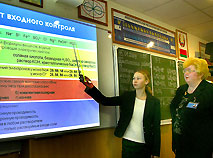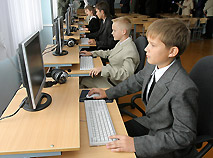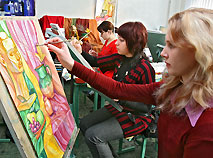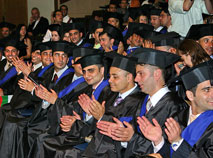Education in Belarus
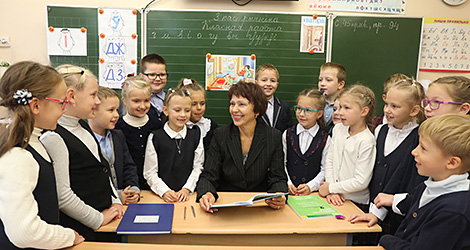
School enrollment in Belarus is about 1 million
Belarus has a well-regarded education system, including universities and further education institutions that attract numerous foreign students.
The Human Development Index (HDI) of the United Nations Development Program positioned Belarus at 69 out of 193 countries and territories in 2023/2024. Educational attainments play a huge role in this. The literacy rate of the adult population is one of the world’s highest (99.7%), while 98% of the country's population completed at least nine years of schooling. At present compulsory education requires eleven years spent in school.
Belarus has a three-tier education model:
-
general education (pre-school education, secondary education, secondary vocational education, post-secondary vocational education, higher learning and science post-graduate education);
-
continuing education for children, young people; continuing education for gifted children and youth, continuing education for adults;
-
special needs education for people with special needs.
Pre-school education
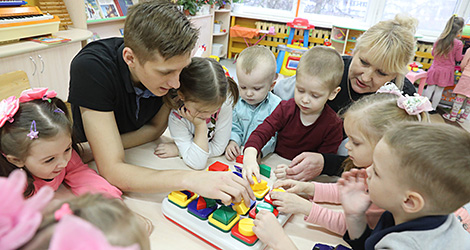 Pre-school education is not compulsory in Belarus but around 70% of children do attend nursery or kindergarten before they start school.
Pre-school education is not compulsory in Belarus but around 70% of children do attend nursery or kindergarten before they start school.
School education in Belarus
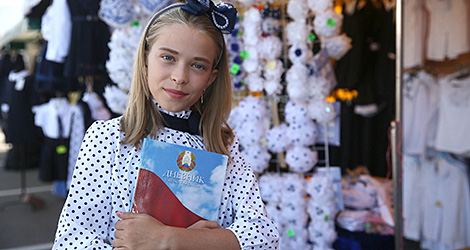 Most children in Belarus start school at the age of 6.
Most children in Belarus start school at the age of 6.
All pupils must follow the basic education curriculum up to the age of 15, and the vast majority of pupils stay at school until they finish their high school education at 18.
At the age of 15, pupils that have successfully completed basic education can attend college or professional technical institutions where they can focus on completing their high school education and work toward a professional certificate.
Completion of a high school or professional certificate allows students to apply to continue their education at the university level.
There are two official languages within the education system in Belarus, Russian and Belarusian.
Further education in Belarus
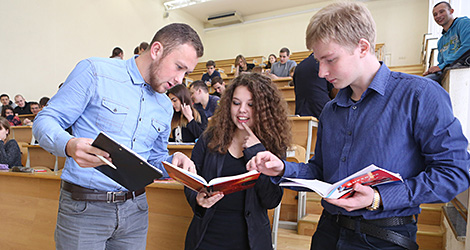 Belarus has one of the highest student-to-population ratios in Europe. The higher education system in Belarus is seen as prestigious due to its high quality and affordability.
Belarus has one of the highest student-to-population ratios in Europe. The higher education system in Belarus is seen as prestigious due to its high quality and affordability.
There are four main types of higher education establishments to choose from, which can be either private or state operated:
-
classical university
-
profile university or academy
-
institute
In 2003, university admission tests were replaced by Centralized Testing (CT). It is held on certain days of June-July according to the schedule approved by the Education Ministry. To enter a university, an applicant needs to present up to three test certificates in different academic disciplines. The number of certificates depends on the chosen specialty and presence of internal exams.
During the period of transition to Centralized Testing, the Education Ministry developed uniform admission rules taking into account the training programs of educational institutions. Other important reforms included the launch of the Classifier of Specialties and Qualifications, the higher education standards, and a 10-grade scale. The final stage was the adoption of the Education Code (2011).
In 2023, Belarus approved a new wording of the rules for the admission to general higher education institutions and specialist higher education institutions. The changes are aimed at improving the system of selection of applicants – talented and motivated young people will get additional opportunities. The main innovation is the introduction of Centralized Exams (CE) which serve as school graduation exams and at the same time as university admission exams.
This will significantly cut the number of tests an applicant has to take within several months. Two centralized exams – one in the Belarusian / Russian language and the other in a discipline of choice – will be mandatory for all school graduates. Centralized Testing (CT) will remain in place, but it will be mandatory only for those who want to enter a higher learning institution. The CE and CT will have the same form and level of complexity. Thus, to be enrolled at a higher learning institution, an applicant will need to present test certificates in three (two) academic disciplines. The average score of the school certificate will also be taken into account, and universities will be able to conduct their own internal exams or interviews.
Most courses run for 4-6 years. Aspiring students can choose one of several forms of learning. They can study during the day or evening, in-class or by distance education.
Grants are available for full-time students and scholarships are awarded to very gifted students.
All higher education establishments are governed by the Ministry of Education in Belarus.
Can foreign students study at Belarusian universities?
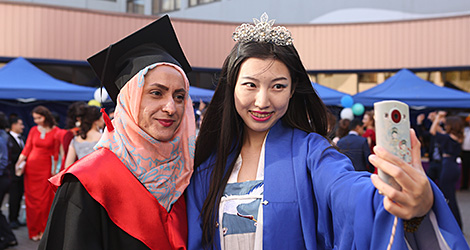 Many foreign students study at higher educational institutions of Belarus. As a rule, education for foreign citizens in Belarus is fee-based. The cost depends on the chosen specialty, form of study and educational institution.
Many foreign students study at higher educational institutions of Belarus. As a rule, education for foreign citizens in Belarus is fee-based. The cost depends on the chosen specialty, form of study and educational institution.
Terms of admission for foreign citizens and stateless persons:
-
free of charge or on a fee basis - in line with international agreements of the Republic of Belarus;
-
on a fee basis – based on the final performance review upon the completion of the pre-university training program required in Belarus;
-
on a fee basis – based on an interview to establish the level of language proficiency that should be sufficient for mastering the educational program established by the Education Ministry, and also based on additional interviews or physical fitness tests, the procedure for which is established by higher education institutions.
Where can you study?
There are 47 higher education establishments in Belarus.







 print version
print version make home page
make home page add to bookmarks
add to bookmarks